Area: 200.4 sq. km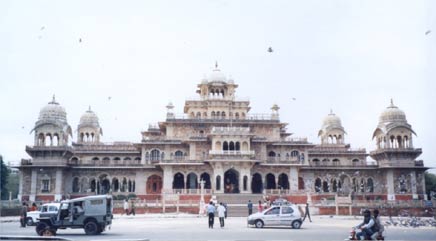
Altitude: 431 meters above sea level
Climate: In Summer: 45 C (Max) - 25 C (Min)
In winter: 22 C (Max) - 8 C (Min)
Rainy Season : July to Mid Sept, and very humid (upto 90%)
Languages: Hindi, Rajasthani, English
Best Time to Visit: October to mid-March
STD Code: 0141
History Of Jaipur
A traveller's journey to the land of the maharajahs, Rajasthan, begins from the city of the maharajahs - Jaipur, the capital city of the state of Rajasthan. It was back in the year 1727 when Maharaja Jai Singh, after whom the city is named, laid the foundation of Jaipur city. Known all around the world as the pink city, Jaipur forms the much popular tourist circuit of Golden Triangle along with the cities of Delhi and Agra. The old city of Jaipur is enclosed within seven gates, the most important of which are Chandpol, Jaipuri and Sanganeri. The city of Jaipur attracts a good number of both domestic and foreign travellers. Being at an easy striking distance of Delhi, Jaipur has become a major hub for tourists visiting northern India.
Rajasthan. It was back in the year 1727 when Maharaja Jai Singh, after whom the city is named, laid the foundation of Jaipur city. Known all around the world as the pink city, Jaipur forms the much popular tourist circuit of Golden Triangle along with the cities of Delhi and Agra. The old city of Jaipur is enclosed within seven gates, the most important of which are Chandpol, Jaipuri and Sanganeri. The city of Jaipur attracts a good number of both domestic and foreign travellers. Being at an easy striking distance of Delhi, Jaipur has become a major hub for tourists visiting northern India.
Sightseeing in Jaipur
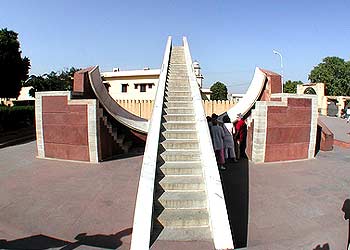
Jaipur, the capital of Rajasthan, was founded by and named after Maharaja Sawai Jai singh II in 1727. It is the first planned city of India. It is located in the North-western part of India. Jaipur is one of the most beautiful cities in India and a major tourist attraction. It is also called the Pink city of India , as most of the buildings walls historical and others are built with pink stones. Jaipur is very popular for its Forts, Palaces, parks and museums. All the historical structures depicts the taste of Rajput style of architecture. Jaipur is also a shoppers Paradise . It is also home for many local artists . Visiting Jaipur is a mermserizing experience for every visitor.
Albert Hall Jaipur
It is situated in the beautiful garden of Jaipur city, Ram Niwas Bagh. It was constructed by Maharaja Sawai Ram Singh in the year 1886 under the drought relief work of Rs 4 Lacs. The design of the building was done by Sir Swinton Jaicob. Presently the hall is used for museum purpose.
City Palace Jaipur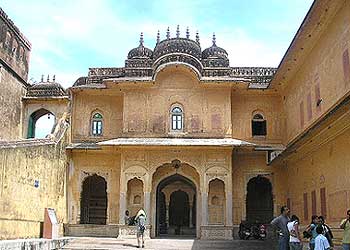
The palace is a magnificent blend of traditional Rajasthani and Mughal architecture. The part of the Palace is still used by the royal family as a residence and the rest portion is converted into a museum. The palace consists of several structures like Badal Mahal, Shri Govind Dev Temple, Mubarak Mahal, Chandra Mahal and City Palace Museum. The palace also consists of an art gallery with a superior collection of miniature paintings, carpets and royal belongings. The palace is 3.5km.from Jaipur. The best time to make a visit is from October to March.
Jantar Mantar Jaipur

Jantar Mantar a stone observatory was built by Sawai Jai Singh between 1728 and 1734. It was built to measure the local time, altitude, the declination of stars, planets and to determine eclipses. Jantar Mantar is a grand celebration of astronomical science and each instrument here serves a particular function and gives an accurate reading.
Nahargarh Fort Jaipur
Nahargarh (tiger Fort), overlooks the city of Jaipur from a sheer ridge to the north and is floodlit at night. The fort was built in 1734 by Jai Singh and extended in 1868. A 9 km road runs up through the hills from Jaipur, and
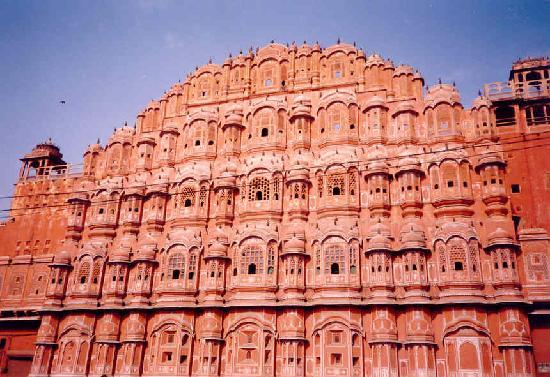 the fort can be reached along a zigzagging 2km path which starts from the north - west of the old city. The glorious view fully justify the effort. Inside the fort you can visit the Madhavendra Bhawan housing the nine apartments of Maharaja Ram Singh's nine wives. The rooms are linked by a maze of corridors and retain some delicate frescoes, as well as toilets and kitchen hearths.
Hotel Silver Plaza Jaipur
the fort can be reached along a zigzagging 2km path which starts from the north - west of the old city. The glorious view fully justify the effort. Inside the fort you can visit the Madhavendra Bhawan housing the nine apartments of Maharaja Ram Singh's nine wives. The rooms are linked by a maze of corridors and retain some delicate frescoes, as well as toilets and kitchen hearths.
Hotel Silver Plaza Jaipur
Amber Fort Jaipur
Amber fort lies at a distance of 11km from Jaipur is a fascinating blend of Hindu and Mughal architecture. Raja Man Singh built it in the 16th century. The fort crowns on top of the hillside, the walls and ceiling of the fort are engrave with ravishing glass mirrors that helps in splashing the sun rays all over the premises. Amber is also known for the marvelous Sheesh Mahal, Jai Mandir, Diwan-i-Aam, Sikh Niwas and the small Kali.
Hawa Mahal Jaipur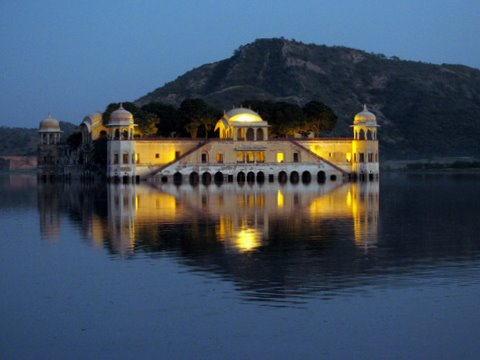
Sawai Pratap Singh built the Palace of Winds in 1799. Lal Chand Ustad designed this impressive multi layered five-storey structure. It provides some excellent views of the colorful city. The Hawa Mahal was designed for the ladies of the royal house to watch the enchanting life on the street without being observed. Visit Timings : 9hrs-17hrs.
Jal Mahal Jaipur
Sawai Pratap Singh built the Mahal in 1799 A.D for royal duck shooting parties. This red sandstone palace is located 6.5 kms from Jaipur on the road to Amber is one of the delightful site at the center of the Man Sagar Lake. First four floors of the structure are submerged in water, only the top floor remains outside. It is also a home to large number of migratory birds arrive at the lake during winters.
Rambagh Palace Jaipur
Rambagh Palace Jaipur is one of the finest hotels in Jaipur that was built as hunting lodge in 1835. The hotel Rambagh Palace belongs to Taj group of hotels and provides world class hospitality to its guests. The hotel Rambagh Palace Jaipur is located about 10 kilometres from the airport and just four kilometres from the railway station. The hotel Rambagh Palace is quiet close to main shopping area of Jaipur.
Birla Planetarium Jaipur
Equipped with modern computerized projection system, the planetarium offers unique audio-visual educational entertainment. A Science Museum is also a part of this one of the most modern planetarium in India.
Jaigarh Fort Jaipur
Jaigarh, or the Fort of Victory, is a rugged fort built in 1726. The world's
largest cannon on wheels is preserved here. The spacious parkotas (wallls) watch
tower and gateways of Jaigarh are main source of attraction.
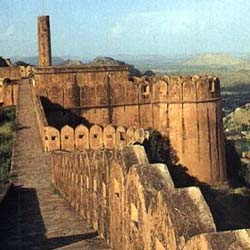 The fort slso
houses a museum, which displays a collection of weapons and cannons, used by the
Rajput rulers. There is an excellent view of the Amer Palace from the fort. It
is 11km. from Jaipur and visiting timings are 0900-1630hrs.
The fort slso
houses a museum, which displays a collection of weapons and cannons, used by the
Rajput rulers. There is an excellent view of the Amer Palace from the fort. It
is 11km. from Jaipur and visiting timings are 0900-1630hrs.
Maharani ki Chhatri Jaipur
Moosi Maharani ki Chhatri is the royal cenotaph of Maharaja Bakhtawar Singh and his Queen Rani Moosi.
The upper story is build up of marble stones and it houses rounded roofs and striking bends. Highly ornamented interiors with marvelous wall paintings are worn out by lack of proper maintenance. Besides an architectural grandeur, this chhatri is placed in a picturesque location that is full of lush foliage and thriving flowers.
Weather of Jaipur can be termed as warm, being situated in the desert area. The three main seasons, summer, monsoon and winter respectively, influence the city of Jaipur. Situated at an altitude of 431m above sea level, Jaipur has extreme type of Climate. Summers are extremely hot with shining sun on the head whereas winters are comparatively cool.The climate and weather of Jaipur is usually hot. The summer season persists from Mid-March to June reaching to the maximum temperature of 48o C. The showers of Monsoons come usually in the month of July preceded by dust and thunderstorms. The city doesn't receive much rain. During the post-monsoon season in September, Jaipur gets hot spell once again. In winters, the city of Jaipur observes bright and pleasant sunny days, though the temperature can reach a low of around4o C during the nights. Frequent problem in winter season is fog that covers the whole city in the evening. Winters dominates the land of Jaipur from the month of October till the month of March. The best time to visit Jaipur is during winters, when the weather is pleasant and very favorable to travel around the royal city of Jaipur.
Jaipur Bus Stand
 Jaipur bus stand is located in center part of Jaipur and also 1 KM away from Jaipur railway station and 14 KM from Jaipur Airport .
The general & luxury bus services are run by Rajasthan State Road Transportation Corp. , these buses run on regular interval depending upon the bus route.
Jaipur bus stand is located in center part of Jaipur and also 1 KM away from Jaipur railway station and 14 KM from Jaipur Airport .
The general & luxury bus services are run by Rajasthan State Road Transportation Corp. , these buses run on regular interval depending upon the bus route.
Useful Telephone Numbers of Jaipur Rajasthan State Road Transportaion Corporation :
1) RSRTC (Rajasthan State Road Transportation Corporatioln) Control Room Phone No. : 5116024 / 237043 / 2205621
2) Jaipur Narain Singh Circle Bus Stand Phone No. : 5120117
Jaipur Railway Station
The central railway station that is Jaipur railway station is located in the Bani Park region. The Jaipur Railway Station provides for the main entry into the city. Besides Jaipur Railway Station some other railway stations in the city are Dahar Ka Balaji Railway Station near Jhotwara, Bais Godam Railway Station near Civil Lines, Durgapura Railway Station near Durgapura in south Jaipur and Gandhinagar Railway Station in the Gandhi Nagar region.
Jaipur Railway Stations Useful Telephone Numbers :
Railway Enquiry No. : 131
Station Suptd. of Durgapura Railway Station : 2721787
Railway Record Enquiry No. : 132
Station Suptd. of Gandhi Nagar Railway Station : 2510416
Computerised Reservation No. (PNR Enquiry) : 135
Jaipur Railway Station Suptd. No. : 2201553
Jaipur Airport
Jaipur Airport is the only international airport in the state of Rajasthan. Jaipur Airport is located near the town of Sanganer in Rajasthan. This International Airport is at a comfortable distance of 13 kms from the city of Jaipur. The new domestic terminal building at Jaipur Airport was inaugurated on 1st July, 2009. The new terminal has an area of 22,950 sqm, is made of glass and steel structure having modern passenger friendly facilities such as central heating system , central air conditioning, inline x-ray baggage inspection system integrated with the departure conveyor system, inclined arrival baggage claim carousals, escalators , public address system, Flight information display system (FIDS), CCTV for surveillance, Airport check-in counters with Common Use Terminal Equipment (CUTE), car parking, etc.
Temples in Jaipur
Birla Temple
 Birla Temple of Jaipur is a major tourist attraction of Rajasthan. Birla Mandir is also known as Laxmi Narayan Temple. It is
located in the south of Jaipur, situated just below the famous Moti Dungri Fort.
Birla Mandir, in pure white marble, dominates the skyline of southern part of Jaipur. The enormous temple was built during the year 1988, by Birla Group of Industries.. The Temple is dedicated to Lord Vishnu (Narayan), the preserver and his consort Lakshmi, the Goddess of wealth. Due to this reason, Birla Temple is also known as Laxmi Narayan Temple.
Birla Temple of Jaipur is a major tourist attraction of Rajasthan. Birla Mandir is also known as Laxmi Narayan Temple. It is
located in the south of Jaipur, situated just below the famous Moti Dungri Fort.
Birla Mandir, in pure white marble, dominates the skyline of southern part of Jaipur. The enormous temple was built during the year 1988, by Birla Group of Industries.. The Temple is dedicated to Lord Vishnu (Narayan), the preserver and his consort Lakshmi, the Goddess of wealth. Due to this reason, Birla Temple is also known as Laxmi Narayan Temple.
Galtaji Temple
 Galtaji Temple in Jaipur is a holy pilgrimage of the Hindus
located 10 kms away from Jaipur in Rajasthan. The vast complex of Galta Ji has several temples in it. The Temple of Galtaji is famous for its natural water.
The water of these springs is accumulated in the tanks or 'kunds'. In all, there are seven tanks, holiest being the Galta Kund, which never goes dry. It is considered auspicious to take bath in the holy waters of Galtaji. Thousands of people come every year to take a dip in the tanks to rinse out their sins.
Galtaji Temple in Jaipur is a holy pilgrimage of the Hindus
located 10 kms away from Jaipur in Rajasthan. The vast complex of Galta Ji has several temples in it. The Temple of Galtaji is famous for its natural water.
The water of these springs is accumulated in the tanks or 'kunds'. In all, there are seven tanks, holiest being the Galta Kund, which never goes dry. It is considered auspicious to take bath in the holy waters of Galtaji. Thousands of people come every year to take a dip in the tanks to rinse out their sins.
Moti Dungri
 Moti Dungri Temple is a major tourist attraction in Jaipur. It is dedicated to Lord Ganesha.
The term Moti Dungri means Hill of Pearls or Pearl Hill. The hill is occupied by a palace and a temple.
Close to the Temple, there a beautiful Palace on the hill, this is known as Moti Dungri Palace. The Palace is an imitation of a Scottish Castle. In the ancient times, it was occupied by Maharaja Madho Singh's son.
Moti Dungri Temple is a major tourist attraction in Jaipur. It is dedicated to Lord Ganesha.
The term Moti Dungri means Hill of Pearls or Pearl Hill. The hill is occupied by a palace and a temple.
Close to the Temple, there a beautiful Palace on the hill, this is known as Moti Dungri Palace. The Palace is an imitation of a Scottish Castle. In the ancient times, it was occupied by Maharaja Madho Singh's son.
Govind Dev Ji Temple
 Govind Dev Ji Temple is one amongst the major tourist attractions of Jaipur. The Temple represents the royal past of Jaipur. The Temple is dedicated to Govind Dev Ji (Other name of Lord Krishna). Govind Devji Temple of Jaipur is situated in the City Palace complex, between the Chandra Mahal and Badal Mahal. According to a legend, Govind Dev Ji appeared in the dream of Raja Sawai Jai Singh and asked him to bring his idol from Vrindavan to Jaipur. As a consequence, Raja Sawai Jai Singh brought the idol and placed in the City Palace complex of Jaipur. After the sad demise of Jai Singh, many successors acquired the throne, but Raja Man Singh took the initiative to build the temple in 1890.
Govind Dev Ji Temple is one amongst the major tourist attractions of Jaipur. The Temple represents the royal past of Jaipur. The Temple is dedicated to Govind Dev Ji (Other name of Lord Krishna). Govind Devji Temple of Jaipur is situated in the City Palace complex, between the Chandra Mahal and Badal Mahal. According to a legend, Govind Dev Ji appeared in the dream of Raja Sawai Jai Singh and asked him to bring his idol from Vrindavan to Jaipur. As a consequence, Raja Sawai Jai Singh brought the idol and placed in the City Palace complex of Jaipur. After the sad demise of Jai Singh, many successors acquired the throne, but Raja Man Singh took the initiative to build the temple in 1890.
Jaipur Monuments
Amber Fort
 Amber Fort is one of the major tourist attractions of Jaipur, the capital of Rajasthan. Know more about Amber/Amer Fort of India.
The Kachchawahas ruled from Amber, 11 km from Jaipur, for seven centuries.
The Amber Fort looks stunning, all-built in white marble and red sandstone.
In 1592, construction of the Fort was started by Raja Man Singh I. However, the Amber Fort took its present form during the reign of Raja Jai Singh.
The interior of the Fort provides a soothing and warm ambience, which is least expected from its outer appearance. The marvelous decoration of the Amer Fort is influenced by both, the Hindu and Muslim manner of ornamentation. Exquisite paintings of hunting scenes on the walls depict the temperament of the Rajputs, who were adventurous, revolutionary and self-indulgent.
Amber Fort is one of the major tourist attractions of Jaipur, the capital of Rajasthan. Know more about Amber/Amer Fort of India.
The Kachchawahas ruled from Amber, 11 km from Jaipur, for seven centuries.
The Amber Fort looks stunning, all-built in white marble and red sandstone.
In 1592, construction of the Fort was started by Raja Man Singh I. However, the Amber Fort took its present form during the reign of Raja Jai Singh.
The interior of the Fort provides a soothing and warm ambience, which is least expected from its outer appearance. The marvelous decoration of the Amer Fort is influenced by both, the Hindu and Muslim manner of ornamentation. Exquisite paintings of hunting scenes on the walls depict the temperament of the Rajputs, who were adventurous, revolutionary and self-indulgent.
The Fort is divided into four subparts. Kali Temple, which is also known as Shila Devi Temple, forms the part of the Fort. It is renowned for its glorious past, huge silver lions and silver doors. The Hall of Public Audiences, Diwan-I-Aam is a pavilion with double row of columns. Ganesh Pol, another feature of the Fort, directs the way to the inhabited apartments of the King. The Hall of Victory, Jai Mandir has a stunning ceiling comprised of mirror work and an inlaid panel.
Hawa Mahal
 Hawa Mahal is a major tourist attraction of Jaipur, the capital Rajasthan. Hawa Mahal is also known as Palace of Winds.
Hawa Mahal is a major landmark and a famous tourist attraction of Jaipur. The splendid Rajputana architecture of Hawa Mahal, still speaks the glory of the royal family. Hawa Mahal was built by Maharaja Sawai Pratap Singh in 1799.
The chief materials used in the structure are red and pink sandstone
the unique shape of the building, unmatched by any of the palaces of Jaipur.
A total of 953 small windows face the streets, adorned by arched roofs.
The screened windows of Hawa Mahal filter sunlight and spread it all over the floor, providing a spectacular sight for the onlooker. The windows also allow circulation of air in a way that keeps the floors cool even in the oppressive heat of Rajasthan.
Hawa Mahal is a major tourist attraction of Jaipur, the capital Rajasthan. Hawa Mahal is also known as Palace of Winds.
Hawa Mahal is a major landmark and a famous tourist attraction of Jaipur. The splendid Rajputana architecture of Hawa Mahal, still speaks the glory of the royal family. Hawa Mahal was built by Maharaja Sawai Pratap Singh in 1799.
The chief materials used in the structure are red and pink sandstone
the unique shape of the building, unmatched by any of the palaces of Jaipur.
A total of 953 small windows face the streets, adorned by arched roofs.
The screened windows of Hawa Mahal filter sunlight and spread it all over the floor, providing a spectacular sight for the onlooker. The windows also allow circulation of air in a way that keeps the floors cool even in the oppressive heat of Rajasthan.
Jaigarh Fort
 Jaigarh Fort forms a major tourist attraction of Jaipur.
Jaigarh fort is 15 kms from Jaipur, 400 ft above the Amber Fort.
This Fort is on top of the hill, while Amber Fort is at the bottom. Many people regard the two as one complex however both of them are well connected with well guarded passages.
The fort served as the treasury of the Kachcawas. It is a remarkable feat of military architecture in a fine state of preservation, with water reservoirs, residential areas, a puppet theatre and world largest wheeled cannon, Jaya Vana .
he Fort has many structures of medieval India, which are worth exploring. It has several palaces, granary, well-planned cannon foundry, several temples and a tall tower. Jaigarh Fort used to serve as the center of artillery production for the Rajputs.
Jaigarh Fort forms a major tourist attraction of Jaipur.
Jaigarh fort is 15 kms from Jaipur, 400 ft above the Amber Fort.
This Fort is on top of the hill, while Amber Fort is at the bottom. Many people regard the two as one complex however both of them are well connected with well guarded passages.
The fort served as the treasury of the Kachcawas. It is a remarkable feat of military architecture in a fine state of preservation, with water reservoirs, residential areas, a puppet theatre and world largest wheeled cannon, Jaya Vana .
he Fort has many structures of medieval India, which are worth exploring. It has several palaces, granary, well-planned cannon foundry, several temples and a tall tower. Jaigarh Fort used to serve as the center of artillery production for the Rajputs.
Jaigarh Fort has many wide water channels, which were a part of a rainwater harvesting system. The Fort also has 3 underground tanks, the largest one of which can store 60, 00,000 gallons of water.
Statue Circle
 Statue Circle forms a major landmark of Jaipur. It is situated on a busy crossing of the city. Statue Circle has got its name from the statue, which it portrays. Statue Circle comprises the statue of King Sawai Jai Singh, the founder of Jaipur. In the statue, Raja Jai Singh is holding an astrological diagram which shows his love for astrology. The memorial is actually made in the loving memory of the generous ruler, builder and futurist.
Statue Circle forms a major landmark of Jaipur. It is situated on a busy crossing of the city. Statue Circle has got its name from the statue, which it portrays. Statue Circle comprises the statue of King Sawai Jai Singh, the founder of Jaipur. In the statue, Raja Jai Singh is holding an astrological diagram which shows his love for astrology. The memorial is actually made in the loving memory of the generous ruler, builder and futurist.
Jantar Mantar
 Jantar Mantar is the largest stone observatory in the World and this feature makes it, a special destination for a traveler. Jantar Mantar is one of the five astronomical observatories built by Maharaja Jai Singh, the founder of Jaipur. Initially Jantar Mantar was named as Yantra Mantra,
which means instruments and formulae, but due to mispronunciation of the term, it is changed to the recognized name.
Jantar Mantar has a remarkable collection of architectural astronomical instruments. It portrays noteworthy attempt of the ancestors, who were interested in astronomy and knowledge of celestial bodies.
Jantar Mantar is the largest stone observatory in the World and this feature makes it, a special destination for a traveler. Jantar Mantar is one of the five astronomical observatories built by Maharaja Jai Singh, the founder of Jaipur. Initially Jantar Mantar was named as Yantra Mantra,
which means instruments and formulae, but due to mispronunciation of the term, it is changed to the recognized name.
Jantar Mantar has a remarkable collection of architectural astronomical instruments. It portrays noteworthy attempt of the ancestors, who were interested in astronomy and knowledge of celestial bodies.
City Palace
 Situated in the heart of Jaipur, the City Palace covers one-seventh of the town, and the plan of the palace is similar to that of the city. The palace has a high wall or sarahad that surrounds it on all sides.
City Palace forms one of the most famous tourist attractions and a major landmark in Jaipur. The beautiful palace was built by Maharaja Sawai Jai Singh during his reign. Among the various forts and palaces of Jaipur, City Palace stands apart, with its outstanding art and architecture. City Palace complex covers a huge area, which is divided into a series of gardens, courtyards and buildings. Initially, Raja Jai Singh built the outer wall occupying a huge area.
A part of the exquisite Palace still makes home for the former Maharaja/ King.
Situated in the heart of Jaipur, the City Palace covers one-seventh of the town, and the plan of the palace is similar to that of the city. The palace has a high wall or sarahad that surrounds it on all sides.
City Palace forms one of the most famous tourist attractions and a major landmark in Jaipur. The beautiful palace was built by Maharaja Sawai Jai Singh during his reign. Among the various forts and palaces of Jaipur, City Palace stands apart, with its outstanding art and architecture. City Palace complex covers a huge area, which is divided into a series of gardens, courtyards and buildings. Initially, Raja Jai Singh built the outer wall occupying a huge area.
A part of the exquisite Palace still makes home for the former Maharaja/ King.
Gardens in Jaipur
Kanak Vrindavan Valley
 Kanak Vrindavan is situated in the bottom of Nahargarh hills adjoining the exAmber Fort, on Jaipur-Amber Road. According to past records, the beautiful green valley was labeled as Kanak Vrindavan Valley by Maharaja Sawai Jai Singh, almost 280-years ago.
Kanak Valley is also believed to be the blessed place where holy water from several rivers was gathered to carry out the Ashwamedh Yajna. Govind Deoji Temple, with its beautiful and delicate carvings, spreads a holy aura of spirituality all over the valley.
Kanak Vrindavan is situated in the bottom of Nahargarh hills adjoining the exAmber Fort, on Jaipur-Amber Road. According to past records, the beautiful green valley was labeled as Kanak Vrindavan Valley by Maharaja Sawai Jai Singh, almost 280-years ago.
Kanak Valley is also believed to be the blessed place where holy water from several rivers was gathered to carry out the Ashwamedh Yajna. Govind Deoji Temple, with its beautiful and delicate carvings, spreads a holy aura of spirituality all over the valley.
Sisodia Rani Ka Bagh
 Sisodia Rani Ka Bagh is a beautiful garden, located at a distance of 10 kms from Jaipur, on Jaipur-Agra Highway. Sisodia Bagh gets a prime attraction in the charming city of Jaipur. The Garden appeals more to the beholder, since it stands as a symbol of love. In 1728, Sisodia Rani Garden was built by Maharaja Sawai Jai Singh, with an intention to gift the garden, to his Sisodia Queen from Udaipur.
Sisodia Rani Ka Bagh is a beautiful garden, located at a distance of 10 kms from Jaipur, on Jaipur-Agra Highway. Sisodia Bagh gets a prime attraction in the charming city of Jaipur. The Garden appeals more to the beholder, since it stands as a symbol of love. In 1728, Sisodia Rani Garden was built by Maharaja Sawai Jai Singh, with an intention to gift the garden, to his Sisodia Queen from Udaipur.
Vidyadhar Garden
 Vidyadhar Garden is a beautiful garden that was derived by the Rajputs of Jaipur from the Mughals' definition of Garden. Vidhyadhar Ka Bagh was made in order to bring a sense of relief in the scorched scenery of the desert land. The Garden is situated at a distance of 8 km in the east of Jaipur,
Vidhyadhar Gardens is the only well-planned garden in the Majestic city of Jaipur, Rajasthan. Vidyadhar Garden was built in the memory of Vidyadhar Bhattacharya, the chief architect and the city planner of Jaipur. The Garden has been designed as per the rules and edicts of Shilpa Shastra, the ancient Indian line of architecture, just as Vidyadhar did while planning Jaipur.
Vidyadhar Garden is a beautiful garden that was derived by the Rajputs of Jaipur from the Mughals' definition of Garden. Vidhyadhar Ka Bagh was made in order to bring a sense of relief in the scorched scenery of the desert land. The Garden is situated at a distance of 8 km in the east of Jaipur,
Vidhyadhar Gardens is the only well-planned garden in the Majestic city of Jaipur, Rajasthan. Vidyadhar Garden was built in the memory of Vidyadhar Bhattacharya, the chief architect and the city planner of Jaipur. The Garden has been designed as per the rules and edicts of Shilpa Shastra, the ancient Indian line of architecture, just as Vidyadhar did while planning Jaipur.
Jaipur Airport Location
Jaipur Map
Jaipur Hospitals
- Jaipur Hospital
Malviya Nagar
Jaipur - 302017
Phone: +91- 141- 2552034 - Aditya Hospital
R-5, Lalkothi
Indrapuri Jaipur - 302005
Phone: +91-141-2742466 - Baheti Hospital
14, Malviya Nagar Main Road
Usha Colony
Jaipur - 302017
Phone: +91-141-2520049 - Bani Park Hospital
Kabir Marg
Bapu Park
Jaipur - 302016
Phone: +91-141-2203864 - Child Care Hospital
M.D. Road
Jaipur - 302004
Phone: +91-141-2660080 - City Hospital
93, Doctors Colony, Near DCM
Amer Road
Jaipur - 302006
Phone: +91-141-2355695 - Durga Devi Memorial Hospital
Shastri Nagar
Jaipur - 302016
Phone: +91-141-2305018 - Girdhar Hospital & Research Centre
11/34, Girdhar Marg
Malviya Nagar
Jaipur - 302017
Phone: +91-141-2552668 - SBMC Hospital
Malviya Nagar
Jaipur - 302017
Phone: +91-141-2518899
Best Time to Visit
Being located in a desert area, the climate of Jaipur is dry and hot. Monsoons too doesn't relief the dry city as Jaipur receives very low rainfall. Winter season is the best time to visit Jaipur. The temperature touches maximum to 20°C and gets down to the extent of 4 °C. In winters, one can enjoy the regal city of Jaipur to its full. The spectacular views offered by the ancient monuments of the city fascinate the visitors. The city looks awesome in the winter evenings when it gets covered with fog. Jaipur offers rich food with lots of butter and ghee, which is best enjoyable in the winter season. Tthe best time to visit the incredible Jaipur is between the months of October to March.
Fairs & Festivals of Jaipur
Elephant Festival
 Groomed to perfection, glittering in gold, row upon row of elephants catwalk before an enthralled audience. The elephants move gracefully in procession, run races, play the regal game of polo, and finally participate in the spring festival of Holi.
The festival begins with a procession of elephants, camels and horses, followed by lively folk dancers. Elephant races, elephant-polo matches and a most interesting tug of war between elephants and men, are all part of this spectacular event.
Groomed to perfection, glittering in gold, row upon row of elephants catwalk before an enthralled audience. The elephants move gracefully in procession, run races, play the regal game of polo, and finally participate in the spring festival of Holi.
The festival begins with a procession of elephants, camels and horses, followed by lively folk dancers. Elephant races, elephant-polo matches and a most interesting tug of war between elephants and men, are all part of this spectacular event.
Gangaur Festival
 Gangaur Festivals holds a special significance for the Rajasthanis. It is celebrated in honour of Gauri, the goddess of abundance. Young girls adorned in their best clothes pray for a spouse of their choice. The married ladies pray for the welfare of their husbands. In the afternoon, a procession is taken out to a garden, tank or a well with the images of Isar and Gauri, placed on the heads of married women. Songs are sung about the departure of Gauri to her husband's house. The procession comes back after offering water to the image of Gauri, which faces backwards on the first two days. On the final day, she faces in the same direction as Isar and the procession concludes with the consignment of all the images in the waters of a tank or a well.
Gangaur Festivals holds a special significance for the Rajasthanis. It is celebrated in honour of Gauri, the goddess of abundance. Young girls adorned in their best clothes pray for a spouse of their choice. The married ladies pray for the welfare of their husbands. In the afternoon, a procession is taken out to a garden, tank or a well with the images of Isar and Gauri, placed on the heads of married women. Songs are sung about the departure of Gauri to her husband's house. The procession comes back after offering water to the image of Gauri, which faces backwards on the first two days. On the final day, she faces in the same direction as Isar and the procession concludes with the consignment of all the images in the waters of a tank or a well.
Kite Festival Jaipur
 14 January is celebrated in India as Makar Sankranti - heralding the transition of the sun into the Northern hemisphere.
People make most out of the festival by flying kites for the whole day. The sky becomes next to invisible as innumerable kites cover it. People form groups and fly kites, to enjoy the event to its full. With each cut loose of a kite, people fill the environment shouting, "Woh Kata".
People shout from their terrace as adversary's kite is cut down. Everyone is an adversary in this game and each kite is a competitor for the other. Engrossed in Kite flying, people enjoy loud music and food on the terrace itself.
14 January is celebrated in India as Makar Sankranti - heralding the transition of the sun into the Northern hemisphere.
People make most out of the festival by flying kites for the whole day. The sky becomes next to invisible as innumerable kites cover it. People form groups and fly kites, to enjoy the event to its full. With each cut loose of a kite, people fill the environment shouting, "Woh Kata".
People shout from their terrace as adversary's kite is cut down. Everyone is an adversary in this game and each kite is a competitor for the other. Engrossed in Kite flying, people enjoy loud music and food on the terrace itself.
Teej Festival
 Teej is celebrated mainly by the women folk of Rajasthan. Married women who idolize Parvati for her devotion to her husband Shiva celebrate Teej. The festivity revolves around singing and dancing in praise of Parvati.
All over Rajasthan, even in remote villages, Jhoolas (swings) are hung from trees and decorated with leaves and flowers. Ladies and girls can be seen enjoying on these swings, playing games, singing folk songs and applying Mehandi (henna) on their palms. In Jaipur an idol of Goddess Parvati (Teej Mata) is taken out in a royal procession from the city palace so that the general public can have a chance to pay homage to the Goddess.
Teej is celebrated mainly by the women folk of Rajasthan. Married women who idolize Parvati for her devotion to her husband Shiva celebrate Teej. The festivity revolves around singing and dancing in praise of Parvati.
All over Rajasthan, even in remote villages, Jhoolas (swings) are hung from trees and decorated with leaves and flowers. Ladies and girls can be seen enjoying on these swings, playing games, singing folk songs and applying Mehandi (henna) on their palms. In Jaipur an idol of Goddess Parvati (Teej Mata) is taken out in a royal procession from the city palace so that the general public can have a chance to pay homage to the Goddess.
Statue Circle Jaipur
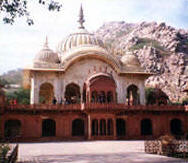
A busy crossing, this has a life - size statue of Maharaja Jai Singh II. It is
a pleasant and popular spot for jogging, dharnas (sit-down protests) and eating
local snacks.
Temples in Jaipur
* Birla Temple Jaipur
* Galtaji Temple Jaipur
* Govind Devji Temple Jaipur
* Laxmi Narayan Temple Jaipur
Jaipur Museums
* Central (Albert Hall) Museum Jaipur
* City Palace Museum Jaipur
* Dolls Museum Jaipur # Hawa Mahal Museum Jaipur
Parks and Gardens in Jaipur
Sisodia Rani ka Bagh Jaipur Kanak Vrindavan Valley Jaipur Zoological Garden Jaipur Ram Niwas Bagh Jaipur Vidyadhar Gardens Jaipur
How To Reach Jaipur
This Royal city is visited by thousands of Indian and foreign visitors every year. So travelling to Jaipur is quite easy as it is well connected with all the major cities in India. One can reach here by any mode Air , Train or Road.
By Air: Jaipur Airport in Sanganer is 13 Kms away from Jaipur. It is also the only international Airport in Rajasthan. Direct flights from major cities can be taken to reach Jaipur. All the major cities which includes Delhi, Mumbai, Calcutta, Jodhpur, Udaipur. Recently, flights to Dubai has also started from Jaipur by Indian Airlines.
By Road: Travelling to Jaipur by road is not difficult as the roads are very well miantained. One can reach Jaipur by deluxe buses, AC coaches , car, taxi. Rajasthan state road transportion corporation runs general and luxury bus service on regular interval. One can easily travel by taxi too.
By Rail: The Central Railway station i.e Jaipur railway station in Bani park region is well connected with all the cities through rail lines. Many people prefer to travel by train due to easy accessibility. One can reach Jaipur from Delhi in app 5 hrs. Shatabadhi express and Interncity express ar daily trains from Delhi. There is also a special train "Palace on Wheels" from New Delhi to Jaipur which was started in 1982 to promote tourism in Rajasthan.
If you are travelling to Jaipur,Rajasthan - use Jaipur Jaipur RajasthanGuide . You can also like it on facebook and get update. To get an idea of Rajasthan area use Jaipur Rajasthan Map
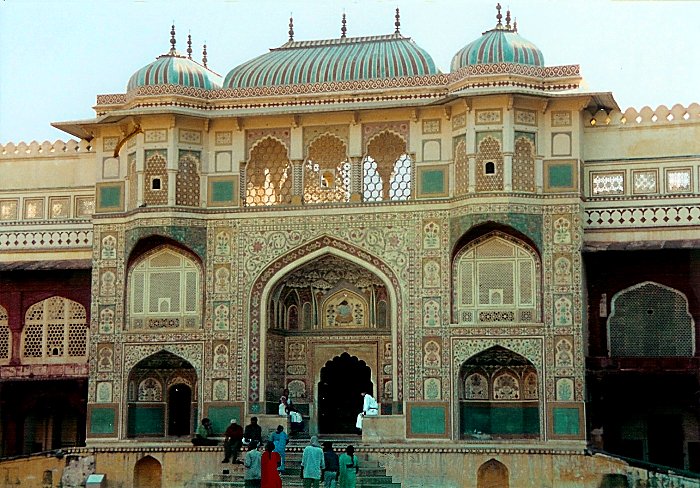
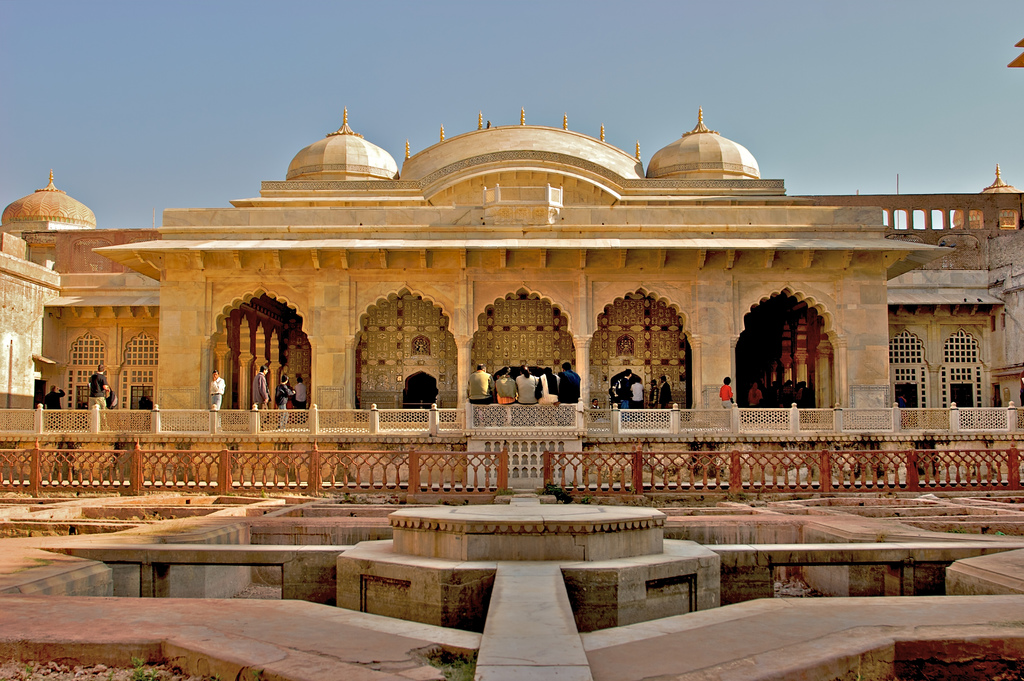
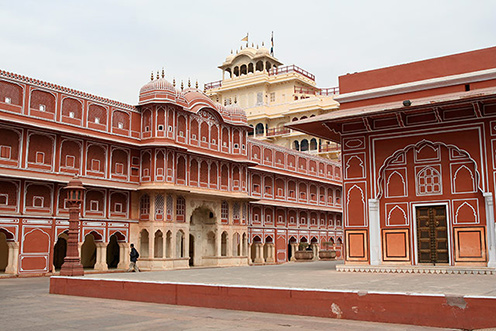

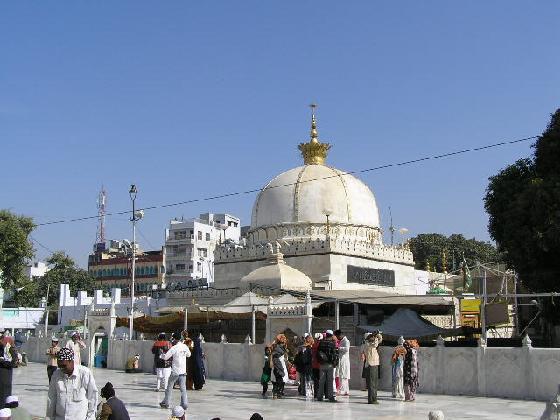
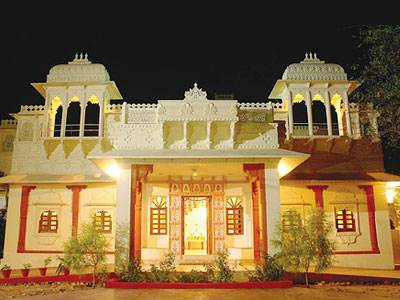
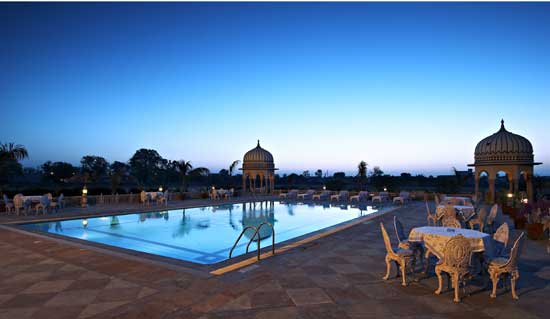
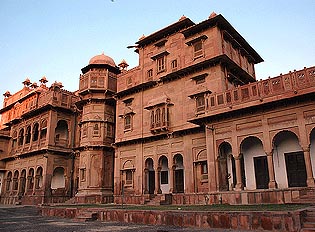


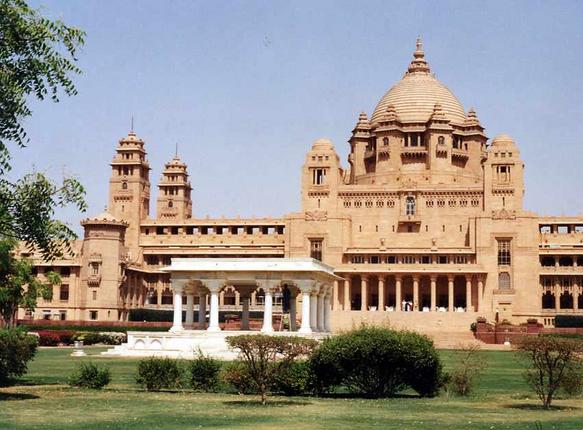
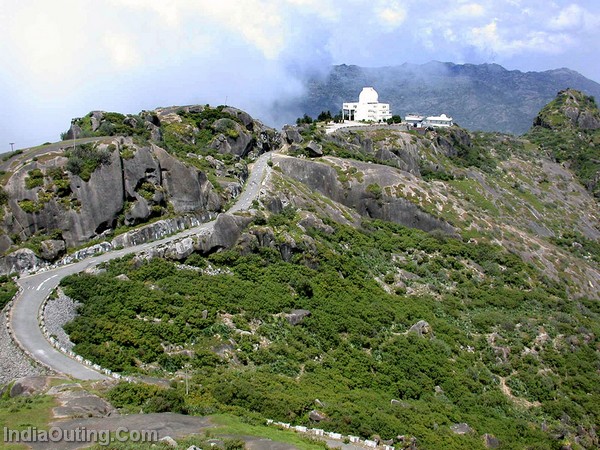
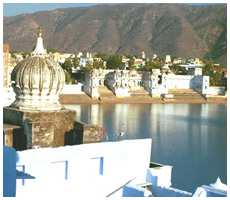
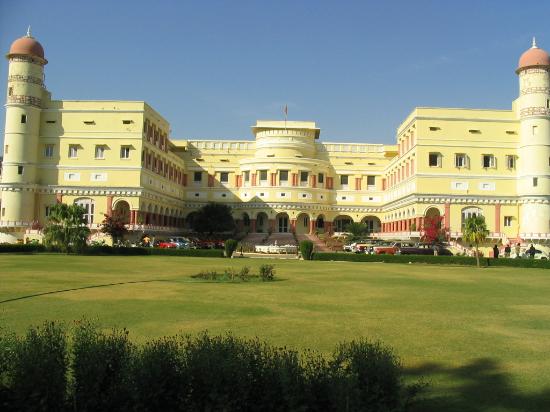
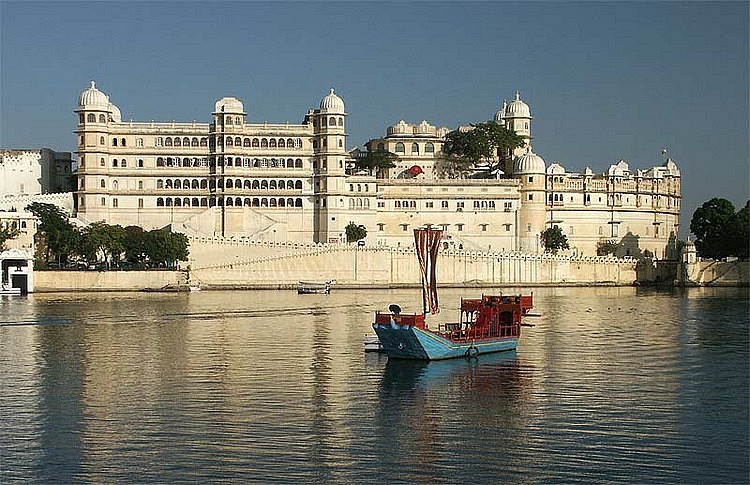




Wild Life Parks